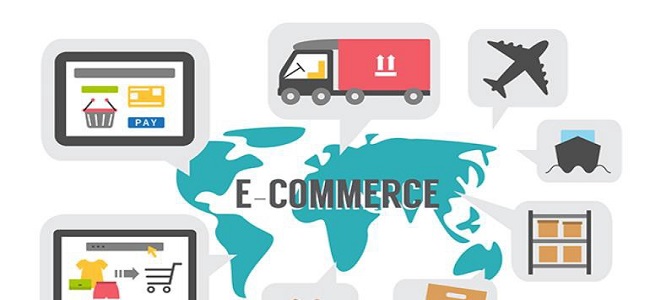It’s no longer about global behemoths; MSMEs and kirana stores, too, have much to gain from e-commerce
E-commerce is India’s sunrise sector, poised to boost the Indian economy with a technology-led push. There has been a perception that if it is not tightly regulated, global retail giants could swoop in and destroy the livelihoods of millions of small traders.
However, for a country like India, e-commerce is a jet-propellant of growth and beyond any foreign behemoths. It is imperative to help achieve the goals of a $5 trillion economy, jobs for our millions across the country and a huge spurt in exports.
The sector should not be choked with unnecessary regulations, and a holistic approach must be taken keeping in view the country’s interests.
India is the fourth largest retail market in the world, and expanding fast especially in rural areas and tier 2/3 towns. The retail market has trebled during the last decade to almost 1$ trillion. Largely unorganised, 88 per cent of the market comprises kirana and neighbourhood stores. There is need to equip them with modern technology and management tools, enhance digital payments, expand logistics infrastructure and strengthen the backbone for efficient supplies and distribution.
Online sales, which constituted about 3 per cent of the traditional $1 trillion retail industry, is now expected to double to 6 per cent, according to a RedSeer estimate.
According to another recent survey, 75 per cent of traditional kirana shops are keen on going digital. While only 3 per cent of kiranas were tech-enabled in 2018, 70 per cent of them in urban areas and 37 per cent in tier 2 cities now want to embrace technology to scale up their business.
Efficient inventory management had been a challenge for most kirana stores as majority of them are operated and managed by a single person. However, digital technology has helped them with wider access to products without increasing working capital. The most lucrative benefit is increased turnover and efficient inventory management. As per a study by Accenture, every such kirana store experienced revenue growth of 20-300 per cent while profits grew by 30-400 per cent.
Strong ecosystem
Today, we have world-class payment, logistics and delivery systems which might have been built to cater to demand generated by India’s e-commerce titans, but now available for everyone. Thanks to UPI, anyone can transfer money to anyone else using a mobile phone, and India has 75 crore mobile users, the second highest globally.
There are programs like Local Shops on Amazon, similarly on Flipkart, which allow kirana shops to garner larger revenues, and there are service providers like Dunzo and Swiggy Genie to deliver anything within a city. E-commerce is no longer about the global behemoths which dominate public perceptions.
According to a study, kirana stores ordered $4 billion worth of groceries and essentials directly from companies like ITC, Hindustan Lever and Dabur through online apps, bypassing traditional distribution channels. HUL has sixlakh retailers on its ‘Shikhar app’, accounting for 10 per cent of total orders. Similarly, Metro enrolled 2.5 lakh kiranas and small retailers for online orders during pandemic, contributing 16 per cent of overall sales.
MSMEs have traditionally formed the backbone of the Indian economy contributing about 30 per cent to India’s GDP. With the e-commerce industry innovating on logistics and delivery services, new growth opportunities have led to the MSMEs building successful enterprises in this space. As people continue to expect faster deliveries, companies like Flipkart and Amazon and others like Reliance and Tatas are strengthening all parts of their network through different programs and encouraging entrepreneurs to partner and grow with them. tion.
The next frontier for MSMEs is global online trade. India has an opportunity to access international markets placed at a combined annual $400 billion. However, supply chain complexities, market entry investments, cross-border payments and uncertainty of demand have often deterred small players.
Today, e-commerce exports have lowered the barrier for MSMEs to enter, experiment and win in global markets.
In China, the US, the EU and the tiger economies of South-East Asia, e-commerce has played a big role in the growth of their economies. India should not be an exception. Let’s allow it to grow.
The writer is Chairman, Competition Advisory Services
Source : https://www.thehindubusinessline.com/opinion/allow-e-commerce-sector-in-india-to-flourish/article36990910.ece

